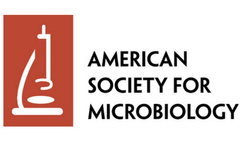Molecular Size Variation Analysis Articles & Analysis: Older
9 articles found
Molecular dynamics simulation is a powerful and widely employed computational method that investigates the motion and interactions of molecules under different conditions, revealing the structure, dynamics, and physical-chemical properties of molecules. This article aims to delve into the fundamental principles, applications, and key techniques of molecular dynamics simulation, providing you with ...
The use of tumour markers to diagnose, assess prognosis, and select a suitable cancer treatment has become possible due to the development of inexpensive and user-friendly molecular analysis tools such as the polymerase chain reaction (PCR). Maintaining the integrity of biomarkers during their processing and storage is therefore of critical importance to accurately diagnose and give prognosis ...
The biological function of restriction enzymes is derived from the defense of foreign DNA from invading cells. The restriction-modification system of bacteria makes the DNA bases of bacteria to be methylated and modified, so that they are not recognized and cut by their own restriction enzymes. The development of restriction endonucleases In the early 1960s, Werner Arber came up with the idea ...
The lengthy battle between people and varied bodily, chemical, and organic insults that trigger cell damage (e.g., merchandise of tissue harm, metabolites, and/or infections) have led to the evolution of assorted adaptive responses. These responses are triggered by recognition of damage-associated molecular patterns (DAMPs) and/or pathogen-associated molecular patterns (PAMPs), normally by cells ...
“The role of the infinitely small in nature is infinitely great” opined Louis Pasteur. Indeed, since microbes have inhabited earth, they have played crucial roles in ecosystems. They have been sine qua non to natural biological cycles and systems including the carbon, nitrogen and sulfur cycles. In addition, they have been at the centre of engineered bioprocesses such as biological ...
A challenge for African countries is how to integrate new sources of knowledge on plant genetics with knowledge from farmer practice to help improve food security. This paper considers the knowledge content of farmer seed systems in the light of a distinction drawn in artificial intelligence research between supervised and unsupervised learning. Supervised learning applied to seed systems ...
Algorithms that infer phylogenetic relationships between serially-sampled sequences have been developed in recent years to assist in the analysis of rapidly-evolving human pathogens. Our study consisted of evaluating seven relevant methods using empirical as well as simulated data sets. In particular, we investigated how the molecular clock hypothesis affected their relative performance, as three ...
A total of 26 strains of Vibrio cholerae, including members of the O1, O139, and non-O1, non-O139 serogroups from both clinical and environmental sources, were examined for the presence of genes encoding cholera toxin (ctxA), zonula occludens toxin (zot), accessory cholera enterotoxin (ace), hemolysin (hlyA), NAG-specific heat-stable toxin (st), toxin-coregulated pilus (tcpA), and outer membrane ...
Rajiv Gandhi Centre for Biotechnology, Jagathy, Thiruvananthapuram 695 014, India; Center for Marine Biotechnology, University of Maryland Biotechnology Institute, Baltimore, Maryland 212022; Department of Cell and Molecular Biology, University of Maryland, College Park, Maryland 207426; School of Public Health, University of São Paulo, São Paulo, SP, 01246-904, São Paulo, Brazil; Department of ...







